Equilin

Equilin structure
|
Common Name | Equilin | ||
|---|---|---|---|---|
| CAS Number | 474-86-2 | Molecular Weight | 268.350 | |
| Density | 1.2±0.1 g/cm3 | Boiling Point | 459.1±45.0 °C at 760 mmHg | |
| Molecular Formula | C18H20O2 | Melting Point | 238-240ºC(lit.) | |
| MSDS | Chinese USA | Flash Point | 195.4±21.3 °C | |
| Symbol |

GHS08 |
Signal Word | Danger | |
Use of EquilinEquilin is one of the estrogens present in the mixture of estrogens isolated from horse urine. |
| Name | equilin |
|---|---|
| Synonym | More Synonyms |
| Description | Equilin is one of the estrogens present in the mixture of estrogens isolated from horse urine. |
|---|---|
| Related Catalog |
| Density | 1.2±0.1 g/cm3 |
|---|---|
| Boiling Point | 459.1±45.0 °C at 760 mmHg |
| Melting Point | 238-240ºC(lit.) |
| Molecular Formula | C18H20O2 |
| Molecular Weight | 268.350 |
| Flash Point | 195.4±21.3 °C |
| Exact Mass | 268.146332 |
| PSA | 37.30000 |
| LogP | 3.53 |
| Vapour Pressure | 0.0±1.2 mmHg at 25°C |
| Index of Refraction | 1.626 |
| Storage condition | -20°C |
|
Section 1. Chemical Product and Company Identification Equilin Common Name/ Trade Name Manufacturer Commercial Name(s) Synonym
Chemical Name Chemical Family Equilin Section 4. First Aid Measures Eye ContactCheck for and remove any contact lenses. In case of contact, immediately flush eyes with plenty of water for at least 15 minutes. Get medical attention if irritation occurs. Skin ContactWash with soap and water. Cover the irritated skin with an emollient. Get medical attention if irritation develops. Serious Skin ContactNot available. InhalationIf inhaled, remove to fresh air. If not breathing, give artificial respiration. If breathing is difficult, give oxygen. Get medical attention. Serious InhalationNot available. IngestionDo NOT induce vomiting unless directed to do so by medical personnel. Never give anything by mouth to an unconscious person. If large quantities of this material are swallowed, call a physician immediately. Loosen tight clothing such as a collar, tie, belt or waistband. Serious IngestionNot available. Section 5. Fire and Explosion Data Flammability of the Product May be combustible at high temperature. Auto-Ignition Temperature Not available. Flash PointsNot available. Flammable LimitsNot available. Products of CombustionThese products are carbon oxides (CO, CO2). Fire Hazards in Presence of Slightly flammable to flammable in presence of heat. Various SubstancesNon-flammable in presence of shocks. Explosion Hazards in Presence Slightly explosive in presence of open flames and sparks. Non-explosive in presence of shocks. of Various Substances SMALL FIRE: Use DRY chemical powder. Fire Fighting Media and InstructionsLARGE FIRE: Use water spray, fog or foam. Do not use water jet. As with most organic solids, fire is possible at elevated temperatures Special Remarks on Fire Hazards Special Remarks on Explosion Fine dust dispersed in air in sufficient concentrations, and in the presence of an ignition source is a potential dust Hazardsexplosion hazard. Section 6. Accidental Release Measures Small SpillUse appropriate tools to put the spilled solid in a convenient waste disposal container. Finish cleaning by spreading water on the contaminated surface and dispose of according to local and regional authority requirements. Large SpillUse a shovel to put the material into a convenient waste disposal container. Finish cleaning by spreading water on the contaminated surface and allow to evacuate through the sanitary system. Equilin Section 7. Handling and Storage PrecautionsKeep away from heat. Keep away from sources of ignition. Ground all equipment containing material. Do not breathe dust. Wear suitable protective clothing. If you feel unwell, seek medical attention and show the label when possible. StorageKeep container tightly closed. Keep container in a cool, well-ventilated area. Section 8. Exposure Controls/Personal Protection Engineering ControlsUse process enclosures, local exhaust ventilation, or other engineering controls to keep airborne levels below recommended exposure limits. If user operations generate dust, fume or mist, use ventilation to keep exposure to airborne contaminants below the exposure limit. Personal ProtectionSafety glasses. Lab coat. Dust respirator. Be sure to use an approved/certified respirator or equivalent. Gloves. Personal Protection in Case of Splash goggles. Full suit. Dust respirator. Boots. Gloves. A self contained breathing apparatus should be used a Large Spillto avoid inhalation of the product. Suggested protective clothing might not be sufficient; consult a specialist BEFORE handling this product. Exposure LimitsNot available. Section 9. Physical and Chemical Properties Physical state and appearance Solid. (crystalline powder.)OdorNot available. TasteNot available. Molecular Weight268.4 g/mole ColorWhite to yellowish. pH (1% soln/water)Not available. Not available. Boiling Point Melting PointNot available. Not available. Critical Temperature Specific GravityNot available. Vapor PressureNot applicable. Vapor DensityNot available. VolatilityNot available. Odor ThresholdNot available. Water/Oil Dist. Coeff.Not available. Ionicity (in Water)Not available. Dispersion PropertiesNot available. SolubilityNot available. Section 10. Stability and Reactivity Data The product is stable. Stability Instability TemperatureNot available. Conditions of InstabilityExcess heat, incompatible materials Not available. Incompatibility with various substances Not available. Corrosivity Equilin Not available. Special Remarks on Reactivity Not available. Special Remarks on Corrosivity PolymerizationWill not occur. Section 11. Toxicological Information Routes of EntryInhalation. Ingestion. Toxicity to AnimalsLD50: Not available. LC50: Not available. Chronic Effects on HumansDEVELOPMENTAL TOXICITY: Classified Reproductive system/toxin/female, Reproductive system/toxin/male [SUSPECTED]. May cause damage to the following organs: the reproductive system. Other Toxic Effects onSlightly hazardous in case of skin contact (irritant), of ingestion, of inhalation. Humans Special Remarks onNot available. Toxicity to Animals Special Remarks onMay affect genetic material (mutagenic). Chronic Effects on HumansMay cause cancer based on animal test data. May cause adverse reproductive effects and birth defects (teratogenic) Special Remarks on otherAcute Potential Health Effects: Toxic Effects on HumansSkin: May cause skin irritation. Eyes: May cause eye irritation. Inhalation: May cause respiratory tract irritation. Ingestion: It may cause nausea, headache, and vomiting. Acute and prolonged or repeated over exposure may cause gynecomastia in men. May cause menstrual irregularities in women. Section 12. Ecological Information EcotoxicityNot available. BOD5 and CODNot available. Products of BiodegradationPossibly hazardous short term degradation products are not likely. However, long term degradation products may arise. Toxicity of the ProductsThe product itself and its products of degradation are not toxic. of Biodegradation Special Remarks on theNot available. Products of Biodegradation Section 13. Disposal Considerations Waste DisposalWaste must be disposed of in accordance with federal, state and local environmental control regulations. Section 14. Transport Information DOT ClassificationNot a DOT controlled material (United States). Not applicable. Identification Not applicable. Special Provisions for Transport Equilin DOT (Pictograms) Section 15. Other Regulatory Information and Pictograms No products were found. Federal and State Regulations CaliforniaCalifornia prop. 65: This product contains the following ingredients for which the State of California has found to cause cancer which would require a warning under the statute: No products were found. Proposition 65 Warnings California prop. 65: This product contains the following ingredients for which the State of California has found to cause birth defects which would require a warning under the statute: No products were found. Other RegulationsOSHA: Hazardous by definition of Hazard Communication Standard (29 CFR 1910.1200). EINECS: This product is on the European Inventory of Existing Commercial Chemical Substances. WHMIS (Canada) Not controlled under WHMIS (Canada). Other Classifications DSCL (EEC)R40- Limited of evidence ofS22- Do not breathe dust. carcinogenic effects.S24/25- Avoid contact with skin and eyes. R60- May impair fertility. Health Hazard HMIS (U.S.A.)1 National Fire Protection 1 Flammability 1 Association (U.S.A.) Fire Hazard 1 0 Reactivity Health Reactivity 0 Specific hazard Personal Protection E WHMIS (Canada) (Pictograms) DSCL (Europe) (Pictograms) TDG (Canada) (Pictograms) ADR (Europe) (Pictograms) Protective Equipment Gloves. Lab coat. Equilin Dust respirator. Be sure to use an approved/certified respirator or equivalent. SECTION 16 - ADDITIONAL INFORMATION N/A |
CHEMICAL IDENTIFICATION
HEALTH HAZARD DATAACUTE TOXICITY DATA
MUTATION DATA
|
| Symbol |

GHS08 |
|---|---|
| Signal Word | Danger |
| Hazard Statements | H351-H360-H362 |
| Precautionary Statements | P201-P260-P263-P280-P308 + P313 |
| Personal Protective Equipment | Eyeshields;full-face particle respirator type N100 (US);Gloves;respirator cartridge type N100 (US);type P1 (EN143) respirator filter;type P3 (EN 143) respirator cartridges |
| Hazard Codes | Xn: Harmful; |
| Risk Phrases | R40 |
| Safety Phrases | 36/37-45-16-7 |
| RIDADR | UN1230 - class 3 - PG 2 - Methanol, solution |
| WGK Germany | 3 |
| RTECS | KG6650000 |
| Precursor 7 | |
|---|---|
| DownStream 7 | |
|
An updated steroid benchmark set and its application in the discovery of novel nanomolar ligands of sex hormone-binding globulin.
J. Med. Chem. 51 , 2047-56, (2008) A benchmark data set of steroids with known affinity for sex hormone-binding globulin (SHBG) has been widely used to validate popular molecular field-based QSAR techniques. We have expanded the data s... |
|
|
Potent and selective steroidal inhibitors of 17beta-hydroxysteroid dehydrogenase type 7, an enzyme that catalyzes the reduction of the key hormones estrone and dihydrotestosterone.
J. Med. Chem. 52 , 7488-502, (2009) 17beta-Hydroxysteroid dehydrogenase type 7 (17beta-HSD7) catalyzes the reduction of estrone (E(1)) into estradiol (E(2)) and of dihydrotestosterone (DHT) into 5alpha-androstane-3beta,17beta-diol (3bet... |
|
|
Comparison of the proliferative effects of estradiol and conjugated equine estrogens on human breast cancer cells and impact of continuous combined progestogen addition.
Climacteric 6(3) , 221-7, (2003) So far, most epidemiological studies investigating breast cancer risk and hormone replacement therapy have been conducted with conjugated equine estrogens (CEE). Recent trials indicate that the additi... |
| Equilin |
| Estra-1,3,5(10),7-tetraen-17-one, 3-hydroxy- |
| 3-Hydroxyestra-1,3,5(10),7-tetraen-17-one (9CI) |
| Dihydroequilenin |
| (9S,13S,14S)-3-hydroxy-13-methyl-9,11,12,14,15,16-hexahydro-6H-cyclopenta[a]phenanthren-17-one |
| 3-Hydroxyestra-1,3,5(10),7-tetraen-17-one |
| 1,3,5(10),7-Estratetraen-3-ol-17-one (3-Hydroxy-1,3,5(10),7-estratetraen-17-one |
| 1,3,5,7-Estratetraen-3-ol-17-one |
| 7-Dehydroestrone |
 CAS#:6733-79-5
CAS#:6733-79-5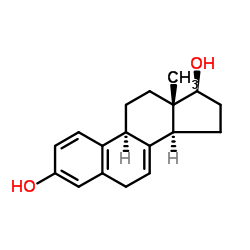 CAS#:3563-27-7
CAS#:3563-27-7 CAS#:1425-10-1
CAS#:1425-10-1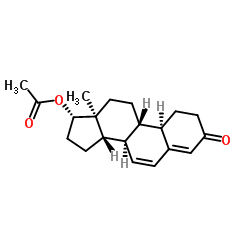 CAS#:2590-41-2
CAS#:2590-41-2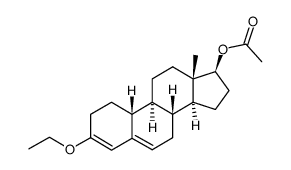 CAS#:6925-84-4
CAS#:6925-84-4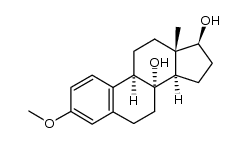 CAS#:13587-56-9
CAS#:13587-56-9 CAS#:23961-02-6
CAS#:23961-02-6 CAS#:474-87-3
CAS#:474-87-3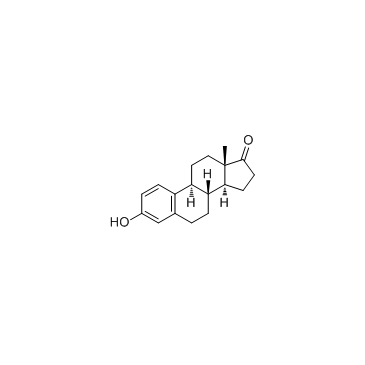 CAS#:53-16-7
CAS#:53-16-7 CAS#:517-09-9
CAS#:517-09-9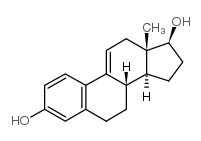 CAS#:791-69-5
CAS#:791-69-5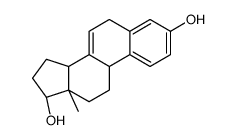 CAS#:651-55-8
CAS#:651-55-8 CAS#:16680-47-0
CAS#:16680-47-0